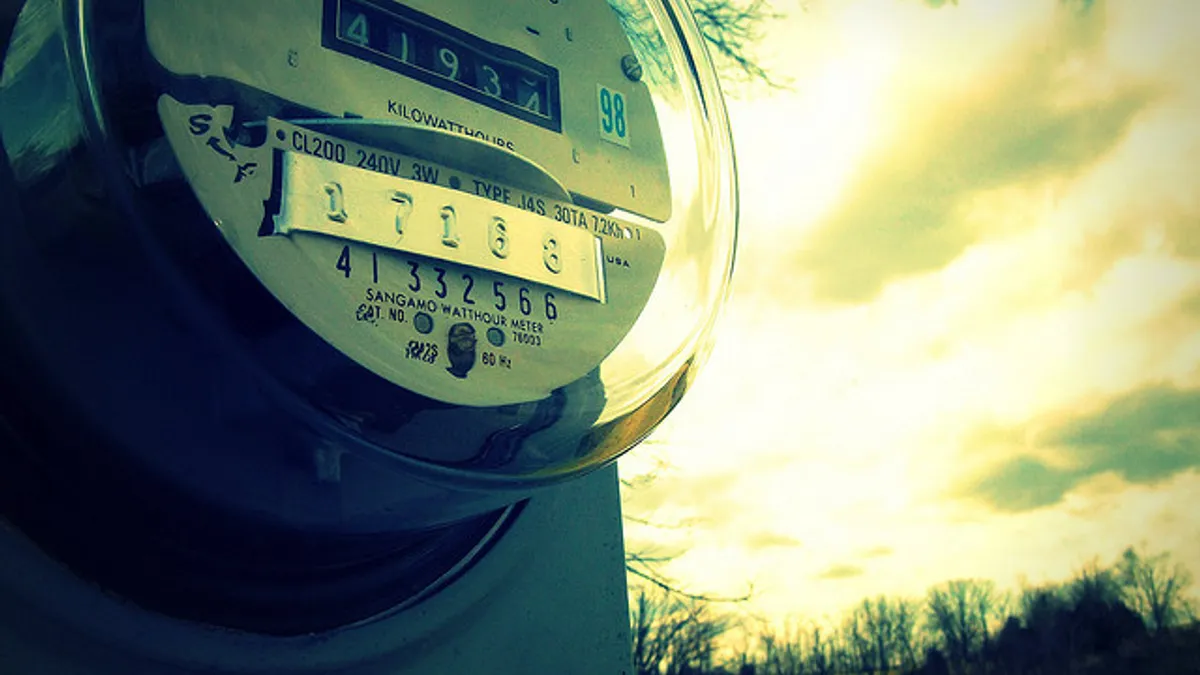Dive Brief:
- Kentucky regulators on Thursday rejected proposals by two utilities to install smart meters throughout their service territories, but will allow the companies to resubmit the plan in the future.
- Kentucky Utilities (KU) and Louisville Gas & Electric (LG&E) proposed to install advanced metering infrastructure (AMI) for a combined 1.3 million customers over the next five years, but regulators at the Public Service Commission (PSC) balked at the $350 million estimated expense.
- The PSC cited conflicting calculations of net savings and inconsistent projections of the meters' expected service life. The rejection is one of several this year, continuing a trend of regulators questioning AMI expansions.
Dive Insight:
Smart meters and other grid modernization technologies are considered foundational to efforts to re-imagine the electric grid, but in at least three instances this year state regulators have questioned whether the advanced infrastructure is really worth the cost.
In May, the Massachusetts Department of Public Utilities rejected proposals they said "revealed weaknesses in the business case for advanced metering functionality."
In June, the North Carolina Utilities Commission rejected Duke Energy's grid modernization proposal, including storage and electric vehicle infrastructure — not on its merits, but because the utility wanted to establish a special rider to pay for the plan. Like the Kentucky utilities, Duke can make changes and bring its proposal back to the commission.
Kentucky regulators questioned AMI costs, but also said that KU and LG&E could not demonstrate new meters were needed to provide adequate service.
"[T]o the contrary, the utilities stated that their existing meters have an average remaining service life of 15 years or more and would continue to provide reliable service," the PSC wrote in a release.
Given that almost $53 million in unrecovered costs remains for their existing meters, "KU and LG&E could not prove that their proposal was a reasonable least-cost option, as required by law," the PSC said.
Regulators pointed to differences between the rejected proposals and a smart meter rollout that they approved for Duke Energy last year. Unlike that proposal, regulators said KU and LG&E did not propose any programs to take advantage of smart meters' advanced capabilities.
"They're definitely having to make the business case" for advanced metering, Autumn Proudlove, senior manager of policy research and the North Carolina Clean Energy Technology Center, told Utility Dive.
"Regulators are looking carefully at the cost and benefits of these technologies to make sure benefits do outweigh the costs and that there are not going to be a lot of stranded costs," Proudlove said. "Especially with AMI in several cases, regulators are finding the numbers just don't work and the investments are not justified at this time."
The Kentucky PSC did give the utilities some room to continue working with AMI, however. Regulators allowed KU and LG&E to expand existing pilot programs that offer smart meters on a voluntary basis. The order allows the utilities to double the programs to serve up to 10,000 customers of each.
As of 2016, U.S. electric utilities had almost 71 million smart on the grid, according to the Energy Information Administration. About 88% of those were residential customer installations.
CORRECTION: A previous version of this article misnamed the plan that NC regulators rejected. It was Duke's AMI grid modernization proposal.














